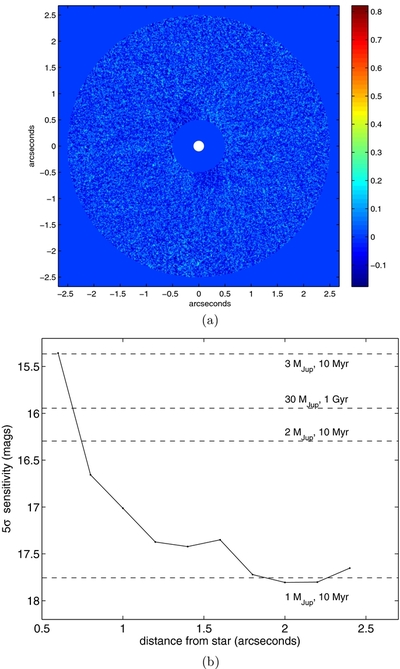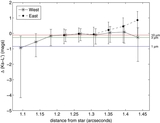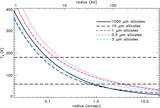Image Details

Caption: Figure 6.
(a) Final image at
L′, in units of σ, computed with an aggressive LOCI reduction. See the text for methodology. The white dot marks the location
of the star and the size of a resolution element at
L′. No high S/N point sources are detected. (b) 5σ sensitivity curve for our
L′ data, computed by inserting artificial planets into the raw data and running our aggressive LOCI reduction. We reach a background
limit of ~17.8 mag, and a contrast of ~9.5 mag at ~0
![]() 6. The horizontal dashed lines represent the magnitudes of 10 Myr old and 10 Gyr old planets, from the Baraffe et al. (2003)
COND mass–luminosity models. We rule out planets more massive than ~3
M
J
if the star is young and 30
M
J
if the star is old.
6. The horizontal dashed lines represent the magnitudes of 10 Myr old and 10 Gyr old planets, from the Baraffe et al. (2003)
COND mass–luminosity models. We rule out planets more massive than ~3
M
J
if the star is young and 30
M
J
if the star is old.
Copyright and Terms & Conditions
© 2012. The American Astronomical Society. All rights reserved.












